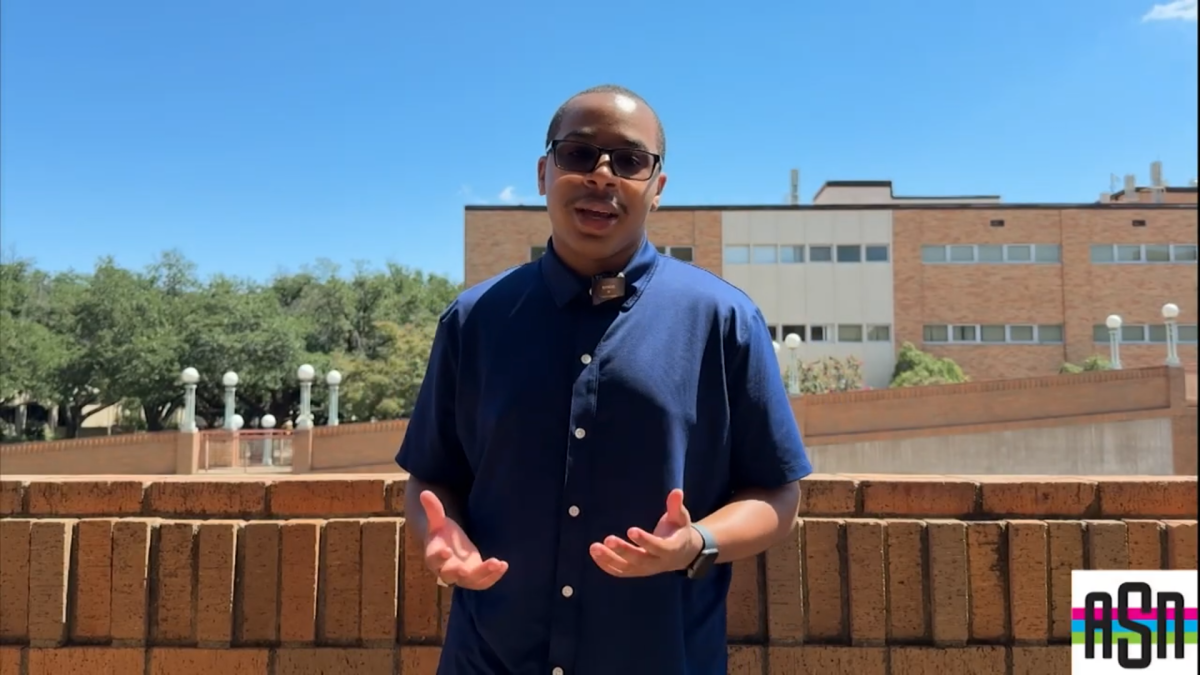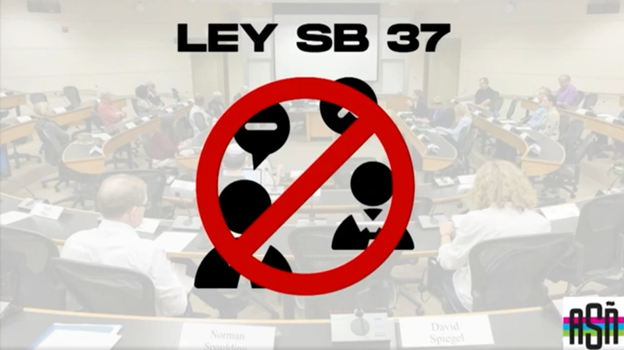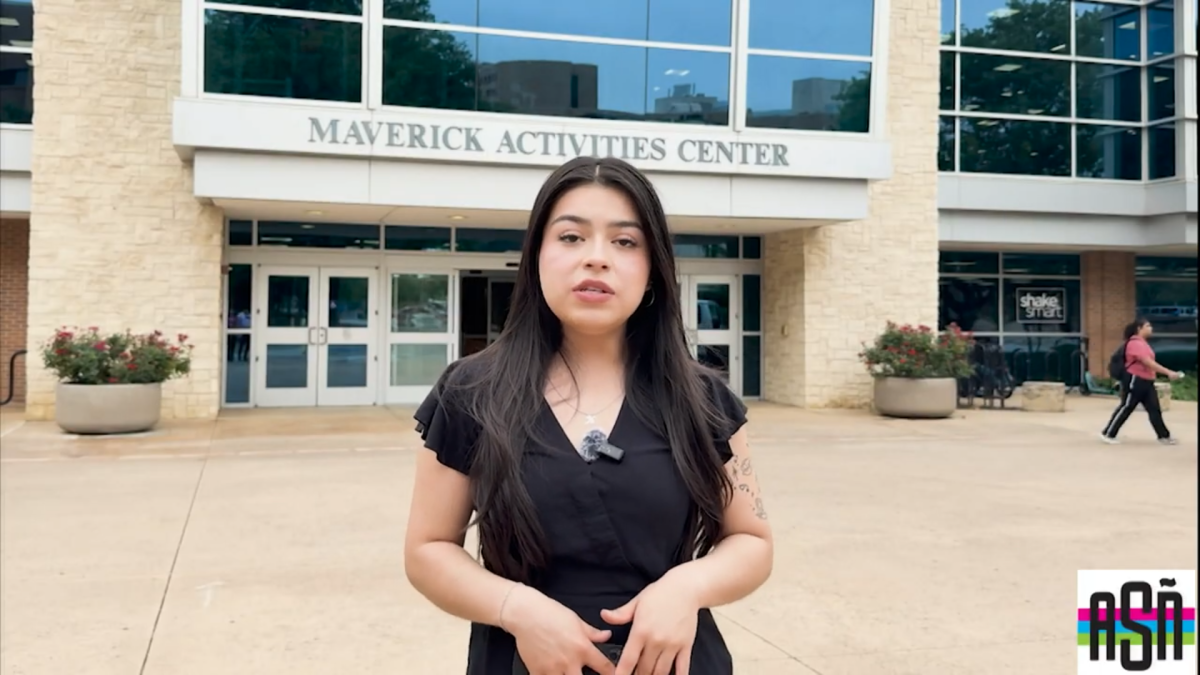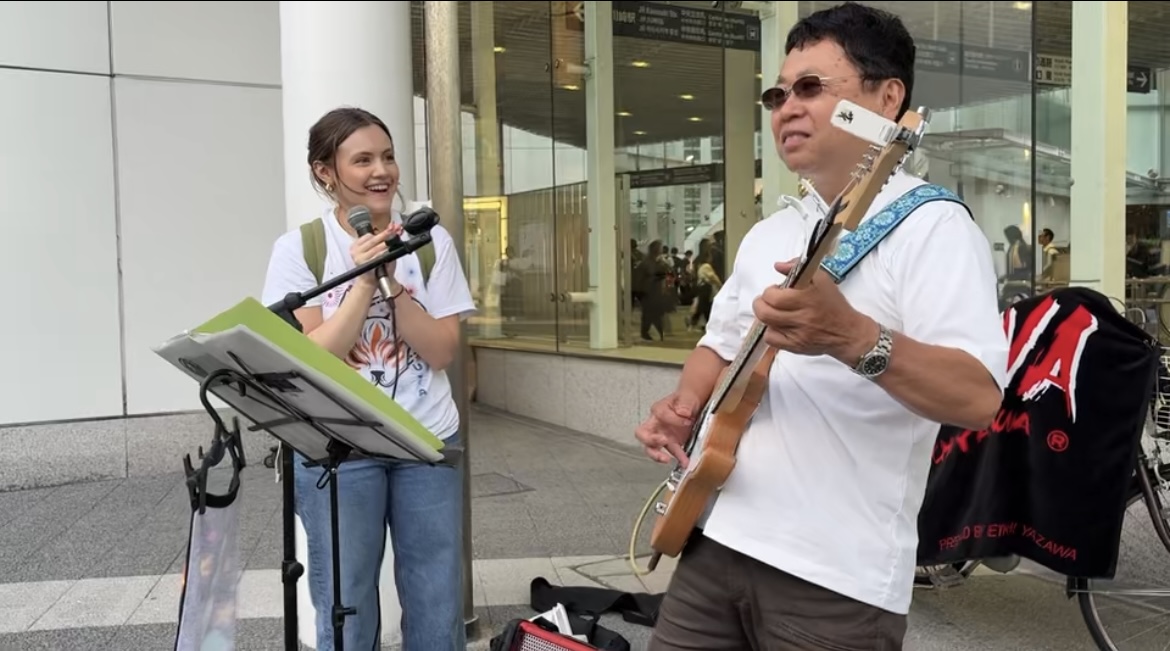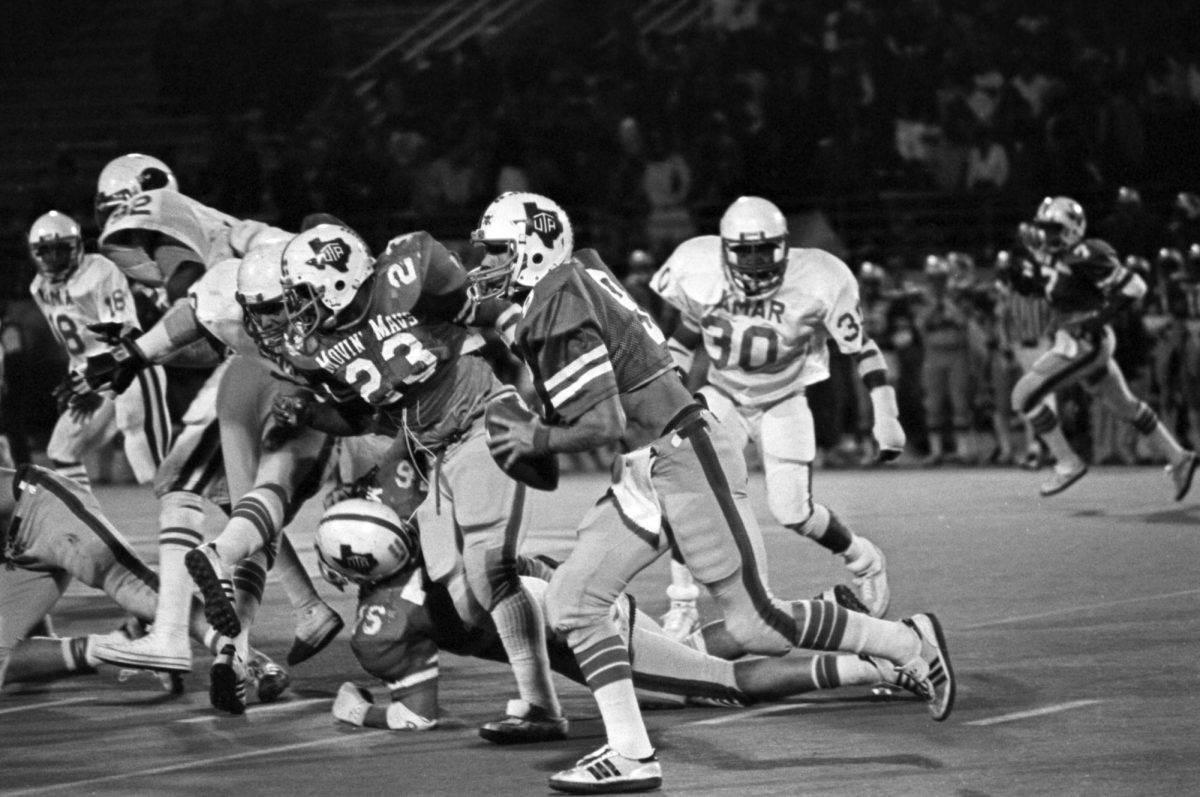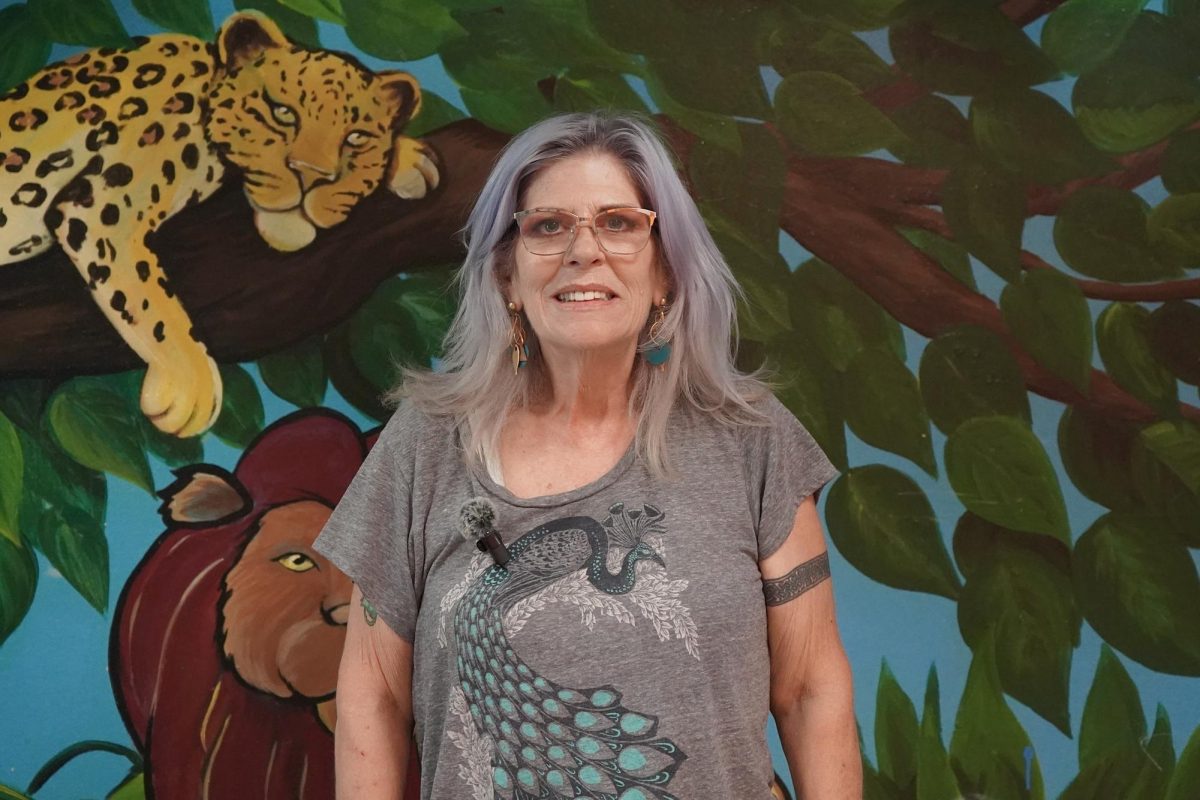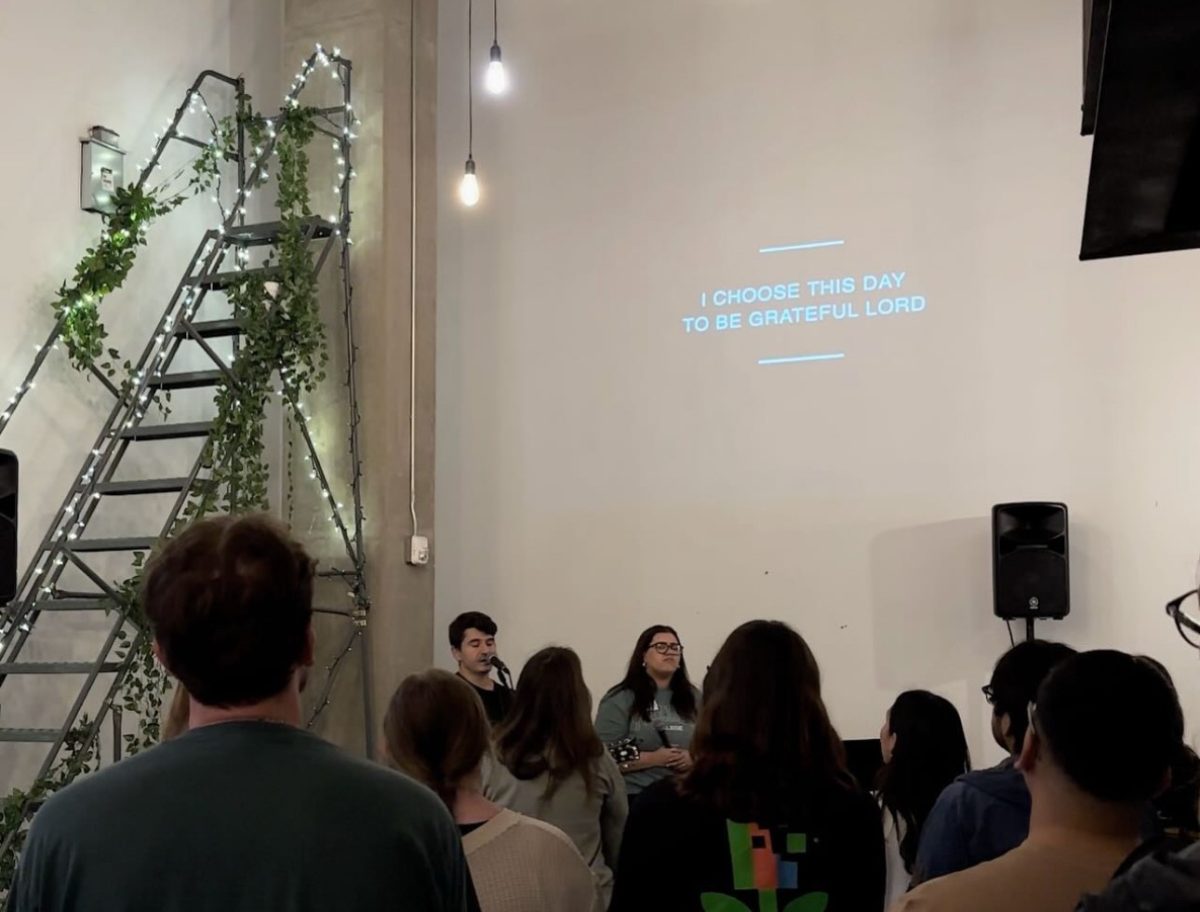Here’s how Texas campaign managers targeted voter apathy in the midterm elections
A Texas and United States flag wave outside Family Faith Academy in Waxahachie, Texas, on Nov. 13. The academy neighbors a former early voting location.
November 29, 2022
ARLINGTON, Texas – Though terms like “voter fraud” and “voter suppression” are familiar talking points in American elections, the faces behind political campaigns are more concerned with another issue: voter apathy.
On Nov. 9, Texans woke up to learn the outcome of the midterm elections, concluding three weeks of voting and years of political campaigns. The state saw notable names on the ballot including the Texas state governor and lieutenant governor. Positions on Tarrant County’s ballot included county judge and criminal district attorney.
The election season re-sparked a nationwide conversation about the county’s varying access to polls, as people question how each state’s voting laws and systems can influence election results. In recent years, Texas has faced criticism as a state with stricter regulations around mail-in ballots and rules requiring photo identification to vote.
Last week, Tarrant County saw 46.96% of its 1.261 million registered voters turn out, according to the county’s election results. Texas, a state of nearly 23 million eligible voters, saw just over 8 million cast their ballots.
Low voter turnout is an old issue, especially in the midterm non-presidential elections, said Thomas Marshall, a political science professor at the University of Texas at Arlington. Candidates have long struggled to mobilize their bases, but voting regulations aren’t the cause.
“The chief thing that drives voter turnout in elections is high profile, expensive races with a lot of voter enthusiasm,” Marshall said. “If we look at the variations in voter turnout, that is the single most important thing by far.”
It takes a lot of effort from the candidate and $15 to $20 to get a new voter registered, he said. In Texas, voters must register to vote at least 30 days before an election, and early voting typically starts 17 days before the election day.
To win a new supporter, a candidate must find and contact a potential voter, ensure they register to vote, contact them multiple times before the election and make sure they’re aware of when and where they can vote, Marshall said.
“They’d probably have to contact me again if I hadn’t voted by election day,” he said. “On the grand scale, that all turns out to be kind of expensive.”
In the governor’s election, recent estimates say the two candidates spent close to $200 million, Marshall said. When only eight million people turn up, that’s a lot of money per voter.
The candidates tried to mobilize supporters in a variety of ways, including door-knocking, text messages, TV commercials, door hangers and mailers. The less money campaigns have to spend, the fewer people will turn up, he said. This is especially seen in city and school board elections.
It wasn’t voting laws that Fort Worth resident Teena James said she blamed for her party’s loss Nov. 8 at the Tarrant County Democratic watch party hosted by the Turkey Den restaurant. Despite her block-walking efforts to pass out campaign flyers in the weeks leading up to the election, James said it was a failure to mobilize new voters that led to the results.
“We didn’t get enough people to decide that their votes were important enough to go out and make a vote or be heard, that’s so hurtful,” she said. “It’s sad that we couldn’t get enough young people to get out and vote to make a change.”
Arlington resident Gabriel Rivas, who works as a political consultant and campaign manager, said that when it comes to his job of raising votes for his clients running for office, he’s more focused on education about the election than the regulations around voting.
“These elections are so low turnout already, they’re usually like at 40% or 45% for midterm elections in Texas,” Rivas said. “Getting votes is literally just talking to the people, especially the people that have a lower propensity turnout.”
A simple message to eligible voters about when to vote and who’s on the ballot is all it takes to drive people to the polls, he said. Rather than persuading voters to his candidate’s political side, Rivas’s job is more just to persuade people to vote.
Rivas was the campaign manager for Alisa Simmons, who on Nov. 8 was elected to the Tarrant County Commissioners Court as one of the only two Democratic candidates to win a race in the county.
Simmons won with 51.45% of the vote, according to Tarrant County’s published results, but her victory didn’t come without stress, Rivas said. Early voting days saw terrible, rainy weather, which didn’t look promising for a campaign so reliant on voter turnout. A third of voters didn’t vote until Election Day, which is contrary to previous state trends.
That’s why educating people about the election is so important.
“People don’t vote for candidates they don’t know,” Rivas said.
If people get to the polls and don’t recognize any names or races, they’re less inclined to vote. If potential voters don’t know what difference they’ll make in an election, they usually just skip it.
“They vote for their choice of governor and then they’re like, ‘oh, there’s a bunch more on this ballot.’ Sometimes they just skip that,” Rivas said. “So you got someone that turned out to vote but they didn’t vote in a down-ballot race.”
This is especially a danger in Simmons’ case because county commissioner is often one of the last items on the ballot, he said.
Photo identification laws’ effect on turnout seems to be minor, Marshall said. But one practical issue in Texas that diminishes turnout is the requirement to be registered 30 days before an election – a law that most states have.
“I don’t ever hear any lively debates about repealing that,” he said. “I can’t imagine trying to run an election, as a practical matter, having no idea how many registered voters are going to show up at polling places.”
Voting systems have become a partisan issue, Marshall said. While proponents of laws that could restrict voting cite voter fraud as justification, there isn’t much evidence for fraud being a widespread issue.
Working in political campaigns and reaching out to voters, Rivas said he has to turn on a “marketing mindset,” making sure the candidate’s brand and logo are everywhere.
“I hear a lot of times at doors, people say ‘oh yeah, I vote in every election… every four years,’” he said. “Making sure they even know there’s an election coming up is a big thing.”
For an audio excerpt from the Rivas interview, click here.

